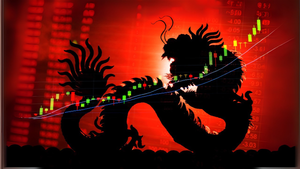
Scientific consulting firm Exponent (NASDAQ: EXPO) announced better-than-expected revenue in Q1 CY2025, but sales were flat year on year at $137.4 million. On the other hand, next quarter’s revenue guidance of $130 million was less impressive, coming in 0.6% below analysts’ estimates. Its non-GAAP profit of $0.63 per share was 20.4% above analysts’ consensus estimates.
Is now the time to buy EXPO? Find out in our full research report (it’s free).
Exponent (EXPO) Q1 CY2025 Highlights:
- Revenue: $137.4 million vs analyst estimates of $134.6 million (flat year on year, 2.1% beat)
- Adjusted EPS: $0.63 vs analyst estimates of $0.52 (20.4% beat)
- Adjusted EBITDA: $45.72 million vs analyst estimates of $34.59 million (33.3% margin, 32.2% beat)
- Revenue Guidance for the full year is $529 million at the midpoint, below analyst estimates of $532.6 million
- EBITDA guidance for the full year is $141 million at the midpoint, below analyst estimates of $143 million
- Operating Margin: 32.3%, up from 22.4% in the same quarter last year
- Free Cash Flow Margin: 4%, down from 6.5% in the same quarter last year
- Market Capitalization: $3.95 billion
StockStory’s Take
Exponent’s first quarter performance was shaped by a stable mix of demand across its reactive and proactive consulting services, with management highlighting continued strength in litigation-driven work. CEO Catherine Corrigan pointed out that while technical staff headcount began the year below typical levels due to prior resource alignment, sequential hiring and high utilization rates helped maintain revenue stability. Corrigan noted, “Exponent’s first quarter results exceeded expectations, reinforcing both the resilience of our diversified business model and the value we deliver.”
Looking ahead, management cited macroeconomic uncertainty and client caution as drivers of a softer revenue outlook. CFO Rich Schlenker explained that some clients are delaying proactive projects, especially in regulated and consumer sectors, and that utilization rates will be affected by holiday timing and ongoing project delays. Corrigan emphasized that Exponent remains focused on hiring in areas with robust demand, particularly in advanced vehicle technology and digital health, even as clients navigate shifting supply chains and regulatory challenges.
Key Insights from Management’s Remarks
Exponent’s leadership attributed its flat year-over-year revenue to steady demand for its dispute-focused (reactive) services and a modest decline in proactive consulting. Forward guidance was influenced by client caution and timing-related project delays.
- Reactive services stability: Litigation and failure analysis work, particularly in chemicals, transportation, and utilities, continued to drive activity, as these needs are less sensitive to economic cycles.
- Proactive services softness: Proactive engagements, including product development and regulatory support, experienced some delays as clients reconsidered project timing in light of macro uncertainty.
- Industry mix and supply chain shifts: Management observed that supply chain realignments—particularly clients diversifying away from China—created new opportunities for Exponent’s advisory work, although these benefits take time to materialize.
- Headcount and utilization trends: Sequential headcount growth and utilization in the mid-70% range helped offset the initial staffing headwind; the company expects to finish the year with higher technical staff levels than at the start.
- Regulatory and policy environment: The evolving regulatory landscape, especially around chemicals and advanced technologies, is expected to sustain demand for Exponent’s services, even as clients experience slower regulatory responses and heightened scrutiny in some sectors.
Drivers of Future Performance
Management sees the coming quarters defined by a mix of industry transformation, regulatory complexity, and shifting client priorities, all set against a backdrop of macroeconomic uncertainty.
- Reactive demand as buffer: Exponent’s heavy weighting toward reactive services, such as litigation and dispute resolution, is expected to limit downside risk in periods of economic softness.
- Supply chain and regulatory shifts: Opportunities tied to clients’ supply chain diversification and increased regulatory oversight, particularly in chemicals, energy, and life sciences, may drive new engagements as these trends accelerate.
- Strategic hiring in growth areas: Continued investment in talent for sectors like automated vehicles, digital health, and asset risk modeling is positioned to support long-term service demand, though management remains cautious about near-term visibility.
Top Analyst Questions
- Jasper Bibb (Truist): Asked about the relative growth of proactive versus reactive services. Management explained that reactive services grew modestly, offsetting a slight decline in proactive work.
- Andrew Nicholas (William Blair): Questioned the drivers of the softer utilization outlook for the next quarter. Management noted holiday timing and some client-initiated project delays as the primary factors.
- Andrew Nicholas (William Blair): Sought clarity on whether delays in proactive work might persist or resolve later in the year. Management said guidance assumes current trends persist, but improvement is possible if delayed projects resume.
- Josh Chan (UBS): Inquired about the impact of macroeconomic uncertainty on client decisions. Leadership responded that while some discretionary work is delayed, core reactive engagements remain steady.
- Josh Chan (UBS): Asked about FTE growth plans given a less predictable environment. Management stated it will continue targeted hiring in high-demand areas, aiming for net headcount growth by year-end.
Catalysts in Upcoming Quarters
In the coming quarters, we will watch closely for (1) signs that delayed proactive projects—especially in consumer electronics and regulatory consulting—resume as client confidence improves, (2) continued sequential growth in technical headcount and utilization as hiring ramps up, and (3) evidence that supply chain realignments and regulatory shifts translate into new advisory work. The persistence of litigation-driven demand and Exponent’s ability to navigate changing regulatory frameworks will also be key indicators of execution.
Exponent currently trades at a forward P/E ratio of 37.9×. At this valuation, is it a buy or sell post earnings? Find out in our free research report.
Stocks That Trumped Tariffs in 2018
Market indices reached historic highs following Donald Trump’s presidential victory in November 2024, but the outlook for 2025 is clouded by new trade policies that could impact business confidence and growth.
While this has caused many investors to adopt a "fearful" wait-and-see approach, we’re leaning into our best ideas that can grow regardless of the political or macroeconomic climate. Take advantage of Mr. Market by checking out our Top 9 Market-Beating Stocks. This is a curated list of our High Quality stocks that have generated a market-beating return of 176% over the last five years.
Stocks that made our list in 2020 include now familiar names such as Nvidia (+1,545% between March 2020 and March 2025) as well as under-the-radar businesses like the once-micro-cap company Kadant (+351% five-year return). Find your next big winner with StockStory today.





